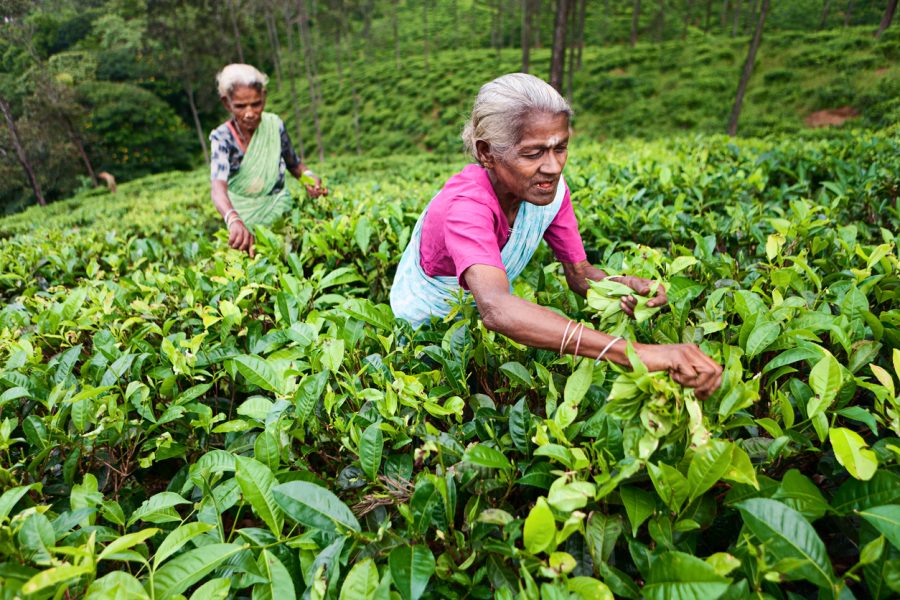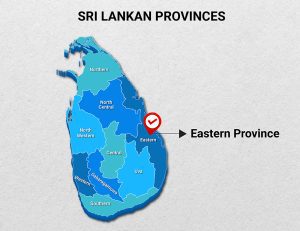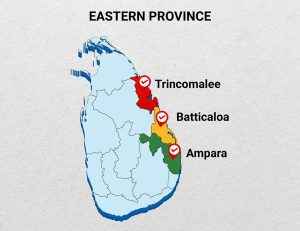
Once in majority, Tamils reduced to minority in eastern Sri Lanka
By slashing Tamil majority in Eastern province, Sri Lanka could puncture Tamil claims that North and East are part of the community's 'traditional homeland'

Tamils are the largest ethnic minority in Sri Lanka. They were traditionally in majority in both the northern and eastern provinces, which together make up eight districts. But over the decades, for more than one reason, the community’s population has become a third of the total in much of the eastern wing. Indeed, Tamils are now a minority in both Trincomalee and Ampara districts, where Muslims now form the majority.


This is not an unknown fact. But for the first time, a Tamil political party, the Akhila Ilankai Tamil Mahasabha, has tabulated the country’s population with a focus on Tamils, all the way from 1881, when the census began, to 2012, when the last census exercise was done. The tables below are an eyeopener.
https://datawrapper.dwcdn.net/V5fy1/3/
Of the 20 million people now in Sri Lanka, the percentage of Sinhalese has risen from 66.9 in 1881 to 74 in 1981. The ethnic armed conflict erupted two years later. In 2012, three decades later and three years after the war ended with the crushing defeat of the Liberation Tigers of Tamil Eelam (LTTE), the Sinhalese population stood at 74.9 per cent of the total.
Decline in Tamil population
In contrast, the population of both Sri Lankan (Ceylon) Tamils and the so-called Indian Tamils, who came to the island nation during the British colonial times as indentured workers, has fallen in the same period.
Opinion: Why LTTE can never be revived
The British began to count the two categories of Tamils separately from 1911 – when both accounted for 12.9 per cent each. In 2012, the Sri Lankan Tamil percentage was 11.2 and that of Indian Tamils a measly 4.2. The Sri Lankan Tamils were 12.6 per cent in 1981, marginally less than what they were in 1911. An estimated 1.5 million Tamils fled Sri Lanka in the decades since the separatist campaign erupted in 1983. The Muslim population (Muslims in Sri Lanka are counted as a distinct ethnic group) shot up from 5.7 per cent in 1911 to 9.2 in 2012.
https://datawrapper.dwcdn.net/HQckX/2/
The Eastern Province shows a study in contrast. From a clear majority of 59.1 per cent in 1881, the Tamils plunged to 39.8 per cent in 2012. While Muslims have remained more or less stable (33.7 per cent in 1881 and 36.7 per cent in 2012), it is the Sinhalese who have zoomed – from 4.7 per cent to 23.1.
The Sinhalese population began to climb from 1953, five years after independence from Britain, and had grown to a quarter of the eastern wing by 1981. Once the war started in 1983, Colombo actively promoted Sinhalese settlements in Trincomalee and Ampara, so as to redraw the demographic divisions.
Eastern province: Tamil claims, current reality
It is only by slashing the Tamil majority in the eastern province that Sri Lanka could puncture Tamil claims that the north and east were part of the community’s “traditional homeland”. Of course, other factors also played a role, including the killing of innocent Sinhalese by the LTTE, which triggered punishing cold-blooded responses from the Sri Lankan military, and the targeting in later stages of Muslims, also by the LTTE, leading to a permanent political rupture between the Tamils and Muslims.
Trincomalee has seen its Tamil population nosedive from a brute 64.8 per cent in 1881 to 32.3 in 2012. The Sinhalese raced from 4.2 per cent in 1881 to 27 per cent in 2012 while the biggest gainers were Muslims who, from 25.9 per cent in 1881, have now become the largest single community in the coastal district at 40.4 per cent.
Also read | 13 years too late: As ethnic fault lines blur, what it means for Sri Lankan Tamils
In the process, Muslims now demand that the province as a whole should have a Muslim chief minister.
https://datawrapper.dwcdn.net/ghYF3/1/
Ampara: Change in pattern
But in Ampara, which was carved out of Batticaloa after the 1953 census, the Tamil proportion has steadily fallen – from 23.8 per cent in 1963 to 17.4 in 2012. The Sinhalese were 29.4 per cent in 1963 and 38.7 per cent in 2012. The Muslim population dipped from 46.4 per cent in 1963 to 43.6 per cent in 2012 but they are now the largest community now in Ampara – like in Trincomalee.
For a better understanding of the tables, some explanatory notes are necessary. Tamils in Sri Lanka (mainly Hindus but also Christians) began to feel ethnic oppression at the hands of the Sinhalese majority (dominantly Buddhists but also Christians) after the British left in February 1948.
Also read: A year after uprising, Rajapaksas are in rebuild mode, but is Sri Lanka the same?
The first mass anti-government protests among the Tamils, then backed by Muslims, took place in 1956. Ampara got a separate identity when the Tamil Federal Party's Gandhian campaign called "Satyagraha" in 1961 led to the administration's collapse in the north and east. Since then, successive Sri Lankan governments began to push Sinhalese into the Ampara region of Batticaloa, a process that was later emulated in Trincomalee.
The sparks of Tamil militancy were lit in the 1970s. The LTTE was formed in 1976. There were several anti-Tamil riots in Sri Lanka, the worst in 1983. The 1983 pogrom truly heralded Tamil militancy, with the covert backing of India. After the war ended in 2009, the government encouraged Sinhalization of parts of the Tamil-majority northern province too, triggering fresh tensions.
Appeal to Modi
This is why, as late as December 2021, leaders of seven Tamil political parties in Sri Lanka urged Indian Prime Minister Narendra Modi to help end the Colombo-backed attempts to change the demography of the north and east. They sought an immediate end to all moves by various government departments besides the military to destroy and pervert evidence showing the historic habitation of Tamils in the northeastern region. They pointed to the alteration of Tamil villages in the border between the northern and eastern provinces by attaching them to Sinhalese villages or bringing in Sinhalese villagers into Tamil areas to change their ethnic character.
The armed conflict may have ended in Sri Lanka but clearly another war continues. The population tables of Sri Lanka and the eastern provinces in particular from 1881 to 2012 show what is going on in what were once Tamil majority areas. Will these creeping Sinhalization in the Tamil region ever end?


